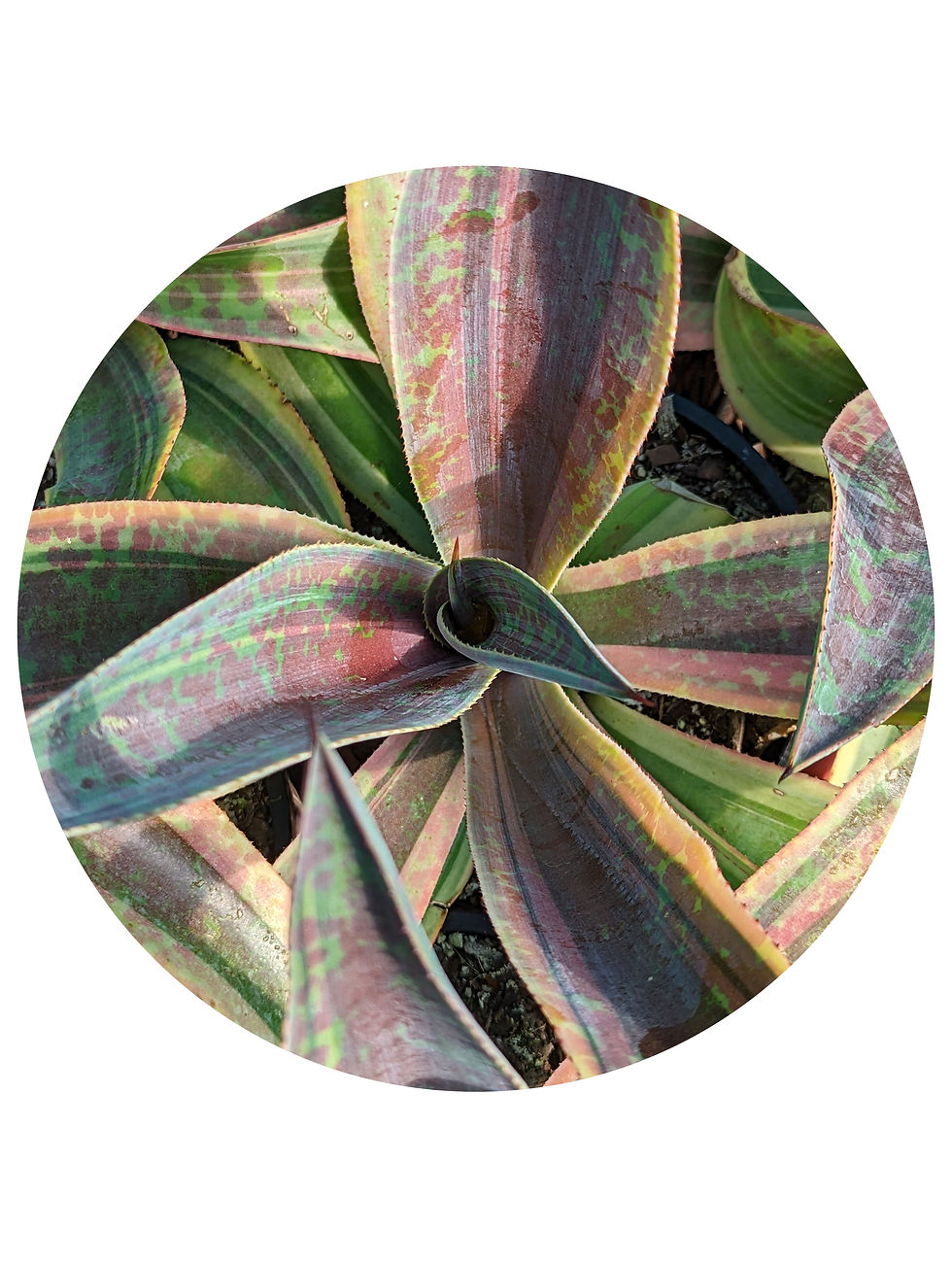Agave (formally Mangave) - Mission to Mars
Agave 'Mission to Mars', a captivating hybrid formerly classified as Mangave, is a striking succulent celebrated for its bold architectural form and unique, often vibrant coloration. This relatively fast-growing agave relative brings a touch of dramatic flair to gardens and containers with its impressive foliage and intriguing patterns.
Key Features of Agave 'Mission to Mars'
- Large, Strappy Leaves: Features broad, strap-like leaves that arch gracefully outwards.
- Intense Red to Burgundy Coloration: The leaves typically display a rich red to burgundy hue, often with darker spotting or mottling, creating a visually striking appearance. Color intensity can vary with light exposure and temperature.
- Soft Spines: The leaf margins are typically adorned with soft, flexible spines or teeth, making it less fiercely armed than some traditional agaves.
- Impressive Size: Can grow to a substantial size relatively quickly, forming a large, eye-catching rosette.
- Architectural Form: The symmetrical rosette and arching leaves create a dramatic and sculptural presence.
- Relatively Fast Growth Rate: Compared to many other agaves, 'Mission to Mars' tends to grow at a more rapid pace.
- Monocarpic Flowering (Agave Trait): As an agave relative, it is monocarpic, meaning it will flower once at maturity, producing a tall flower stalk with numerous blooms, after which the main rosette will die. However, offsets often develop before or after flowering.
Care for Your Agave 'Mission to Mars'
- Light: Thrives in full sun to partial shade. Full sun will enhance the intensity of the red coloration.
- Soil: Requires well-draining soil to prevent root rot. A sandy or gravelly soil mix is ideal.
- Watering: Water sparingly, allowing the soil to dry out completely between waterings. It is drought-tolerant once established and susceptible to overwatering. Reduce watering significantly during the dormant winter months.
- Temperature: Prefers warm temperatures and is generally not frost-tolerant. Protect from freezing conditions.
- Humidity: Adapts well to a range of humidity levels. Good air circulation is beneficial.
Maintenance for a Thriving Agave 'Mission to Mars'
- Removing Dead Leaves: Regularly remove any dead or dried leaves from the base of the rosette.
- Handling Spines: While softer than some agaves, exercise caution when handling the leaf margins.
- Monitoring for Pests: Generally pest-resistant, but watch for occasional issues like scale or mealybugs.
- Flowering Considerations: Be aware that the main rosette will die after flowering. Enjoy the impressive floral display and anticipate the growth of offsets.
- Repotting (If in Containers): Repot as needed when the plant outgrows its container, using a well-draining soil mix.
Propagation Methods for Expanding Your Collection
- Offsets (Pups): The primary method of propagation. As the plant matures, it will often produce offsets around its base. These can be carefully separated once they have developed their own root system. Allow the cut surfaces to callus over for a day or two before planting.
Agave 'Mission to Mars' is a bold and relatively easy-to-grow succulent that brings dramatic color and architectural interest to any garden or container. Its impressive size and unique foliage make it a standout specimen.
* Picture and information intended only as a guide. Size and colours of plants will vary, not any 1 plant is exactly the same and minor variations will occur.
** All plants will be posted bare rooted.

